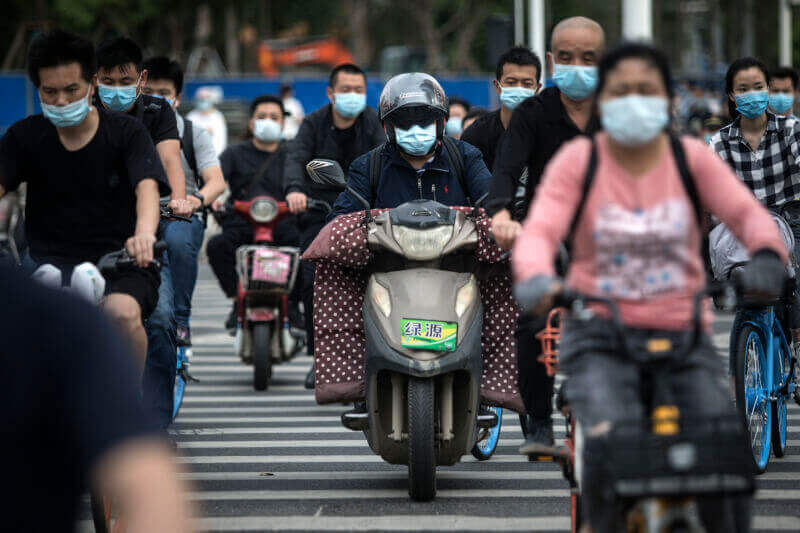Authorities in the Chinese city where the coronavirus pandemic originated are planning to test all 11 million residents for the virus within 10 days after a handful of fresh infections were discovered in the city.
A cluster of six new cases was recently found in one part of the city, the first local infections the government has reported in Wuhan since before the lockdown was eased in early April. All of the infected lived in the same residential community in Dongxihu District–an 89-year-old symptomatic man, and five asymptomatic cases. In addition, all of the new cases are believed to be from local transmission, barely two weeks after the central Chinese city declared that the last of its patients had been discharged from hospital.
China has largely brought the virus under control, but it has been on edge about being hit by a second wave after lifting lockdowns and restrictions across the country. Virus clusters have appeared in recent weeks in the northeastern provinces of Jilin and Heilongjiang, which border Russia.
District health commissions and neighbourhood committees in the city of Wuhan have been told to develop a plan to test all residents in their jurisdictions, local media reports said. The directive also said that the testing should focus on elderly residents, densely populated areas, and places with mobile populations.
Therefore, authorities in Wuhan will conduct city-wide nucleic acid testing over a period of 10 days, according to an emergency notice issued by local authorities and circulated by state-run media outlet The Paper. Nucleic acid tests work by detecting the virus’ genetic code and can be more effective in detecting the infection, particularly in the early stages, than tests that examine a body’s immune response, although the latter is easier to conduct.
In the recent past, contact tracing in Wuhan and other places has lead to other residents in the neighbourhood being tested, uncovering dozens of asymptomatic cases who were then quarantined. But, under China’s tabulation system, patients who do not show symptoms but test positive in the nucleic acid test are not added to the official tally. The tally, therefore, can be misleading because around a dozen asymptomatic cases have been reported daily in Wuhan since such figures were released beginning April 1. As of Tuesday, there were still 589 such patients under “medical observation”.
The ambitious screening drive, described in the report as a “ten-day battle”, could see up to 11 million people tested. It remains unclear how many people still need to be tested, as one expert at Wuhan University told the Global Times newspaper that up to 5 million residents of Wuhan have already been tested since the new outbreak began. Moreover, not everyone agrees with the new testing strategy. Wu Zunyou, the chief epidemiologist at the Chinese Center for Disease Control and Prevention, told state broadcaster CCTV that it was “not necessary” for every person in Wuhan to be tested. “Neighbourhoods without any cases don’t need to screen every person,” Mr. Wu said.
The first cases of the new coronavirus were found in Wuhan in December, and by the end of January, the government had placed the entire city and the surrounding region, home to more than 50 million people, under strict lockdown.
Wuhan was the first city in the world to implement a lockdown and great effort has been expended in an attempt to eliminate the virus. The city has been gradually returning to normal after that 76-day enforced lockdown was lifted on April 8, with residents finally permitted to go outside, though many businesses remain closed. Despite the ongoing economic pain and trauma, however, Wuhan had been held up as a poster child of China’s effective response to the pandemic, for emerging “like a phoenix”, in the words of one state-backed newspaper.
The reemergence of the virus has already had ramifications for the local government. State media reported on Monday that Zhang Yuxin, the chief official of Changqing, the area where the new cases were detected, was removed from his post “for failures in epidemic prevention and control work”.
Image Source: Getty Images
Wuhan to Test Entire Population After New Cluster Emerges
May 13, 2020

